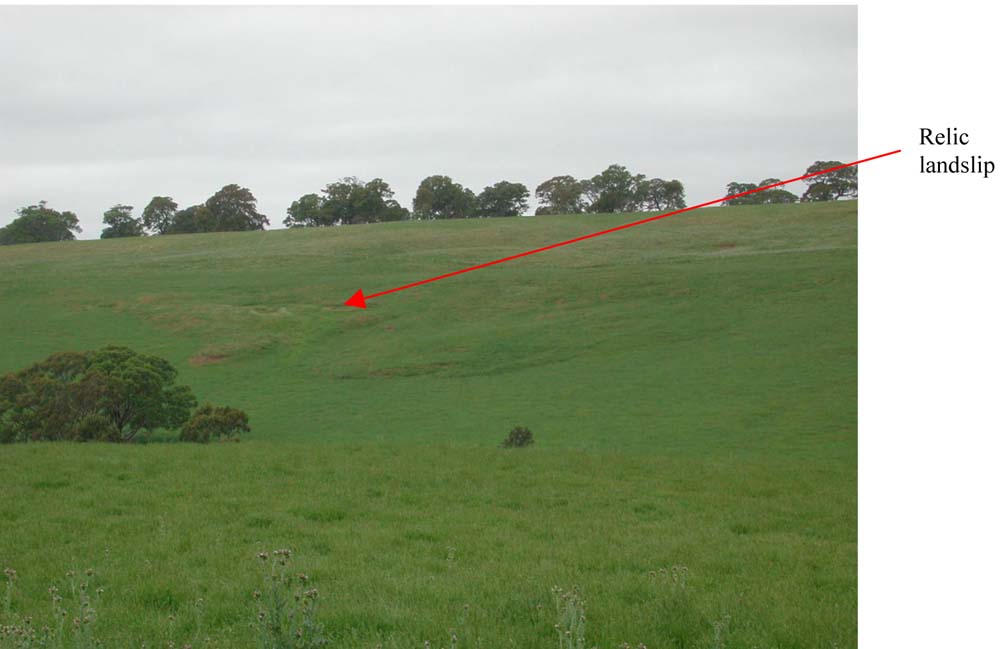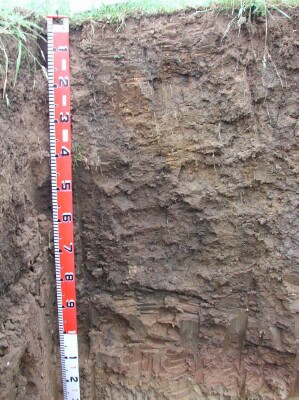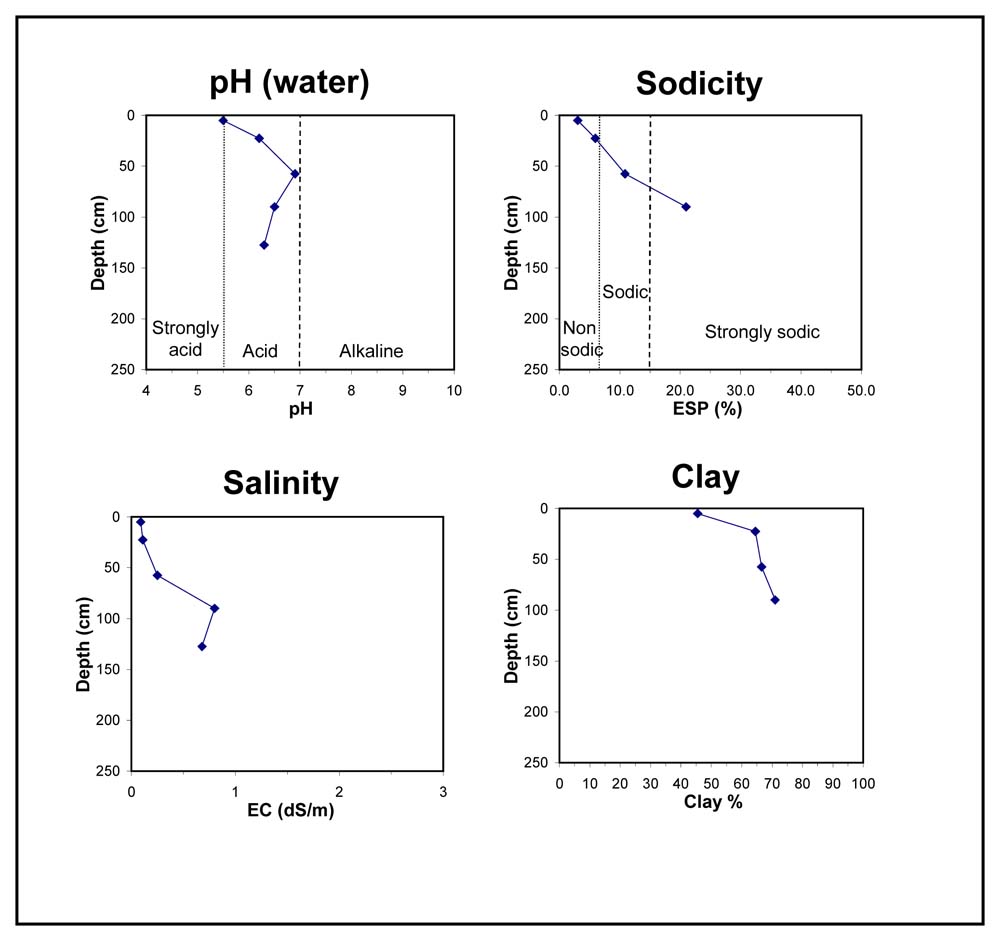GL158
| Site: GL158 | Land Unit: Dundas Tillite |
| Aust. Soil Class.: Endohypersodic, Epipedal, Black VERTOSOL (confidence level 1) | |
 | General Land Unit Description: This land unit consists of the Permian glacial, fluvial and lacustrine sediment outcrop in the valleys of the Dundas Tablelands. The landform is mainly dissected low hills and rises. The main soil types occurring on this unit are Black Sodosols or Black Vertosols. Grey Sodosols commonly occur on the lower slopes. Most soils become considerably more sodic at depth, which contributes to the imperfect drainage of the soil. This land unit is highly susceptible to water erosion, due mainly to the deep sodic soils. As the Tillite is a mixture of materials (not totally consolidated) the soils (particularly the grey soils) tend to be less stable when exposed. Land slips are common in this land unit. This site is located on colluvial fan material on the lower reaches of an undulating valley. The soil profile indicates that gilgai microrelief is evident. The swales tend to have lighter, yellow soils and the hummocks tend to have darker soils. The darker soils are deemed more common and therefore are described below. On some of the steep slopes of the Merino tablelands, relic soil slumping is evident, and the slopes are still susceptible to landslips. |
Site Description:
| Slope: 11% | Geology: Permian tillite |
| Landform pattern: Rolling low hills | Position in landscape: Mid to lower slope |
| Internal drainage: Imperfectly to poorly drained |
Soil Profile Morphology
| A1 | 0-10 cm | Very dark brown (10YR2/2) light clay to light medium clay, many faint fine yellowish red (5YR4/6) mottles, moderate to strong polyhedral structure (10-50 mm), firm consistence when dry pH 5.5; clear transition to: |  |
| Subsoil | |||
| B21 | 10-35 cm | Very dark greyish brown (10YR3/2) medium to heavy clay, many distinct dark yellowish brown (10YR4/4) mottles, moderate to strong columnar (50-100 mm) breaking to subangular blocky structure (10-20 mm) structure, very strong consistence when dry to very firm when moist, very few coarse ferruginous nodules, pH 6.2; gradual and wavy transition to: | |
| B22 | 35-80 cm | Dark greyish brown (10YR4/2) heavy clay, many faint medium light olive brown (2.5Y5/3) mottles, strong lenticular to strong blocky structure (10-100 mm), slickensides evident, strong to very strong consistence when dry, very plastic when wet, very few coarse ferruginous nodules, pH6.9; gradual and wavy transition to: | |
| B23 | 80-120 cm | Very dark greyish brown (10YR3/2) heavy clay, many distinct coarse dark yellowish brown (10YR4/6) mottles, strong lenticular structure (10-100mm), strong consistence when dry, very plastic when wet, very few coarse ferruginous nodules, pH6.5; gradual and wavy transition to: | |
| B3 | 120-135 cm | Brown (10YR5/3) heavy clay, many distinct fine reddish brown (2.5YR4/4) mottles, medium polyhedral to blocky structure (5-50 mm), strong consistence when dry, very plastic when wet, pH6.3; clear transition to: | |
| C | 135-170 cm | Light olive brown (2.5Y5/3) heavy clay, many prominent coarse strong brown (7.5YR5/8) mottles. |
Key profile features:
- Sodic subsoil at depth
- Mottled subsoil
- Cracking soil
- Clay throughout
- Topsoil dispersive when worked when wet
- Top of the subsoil dispersive when worked when wet



